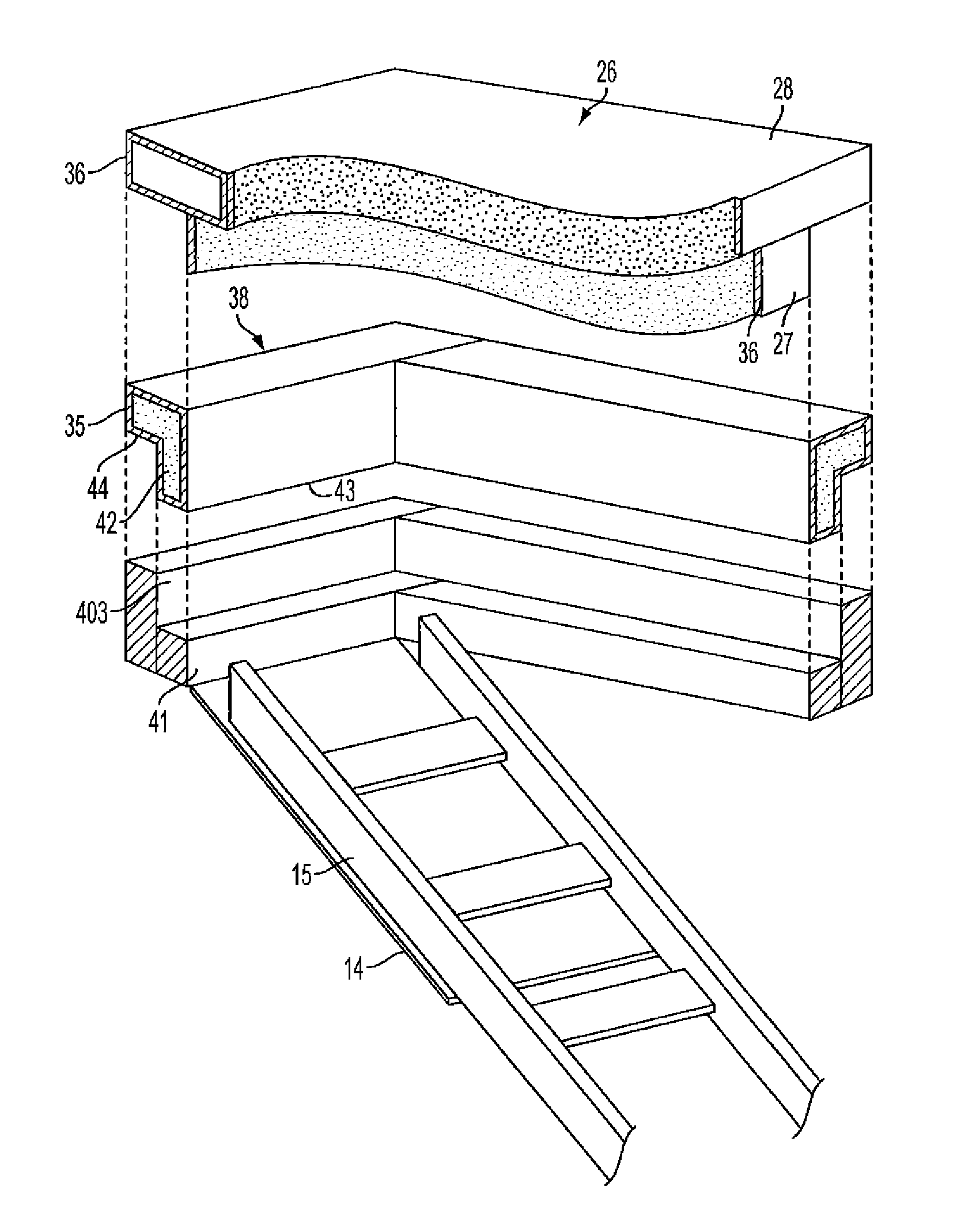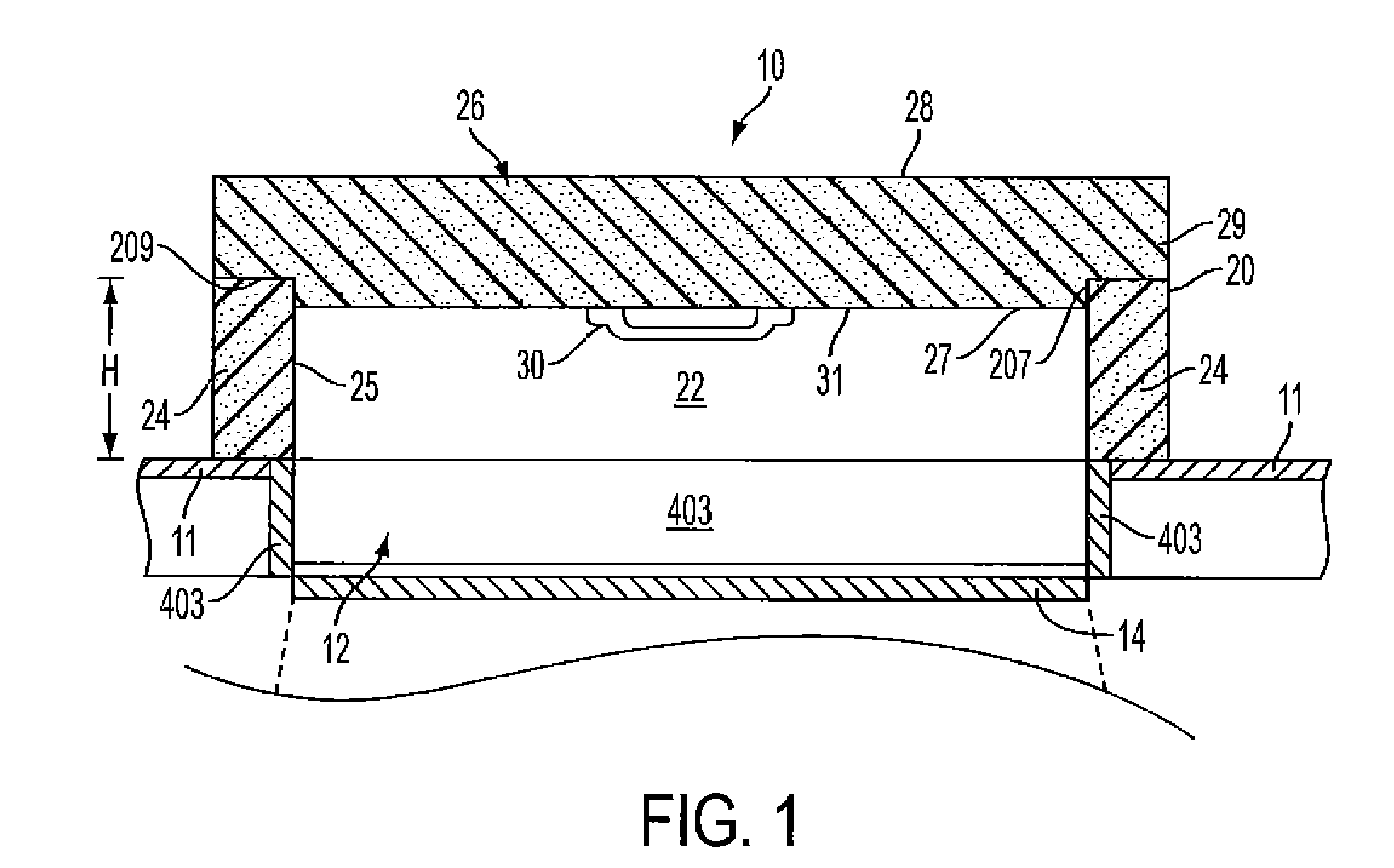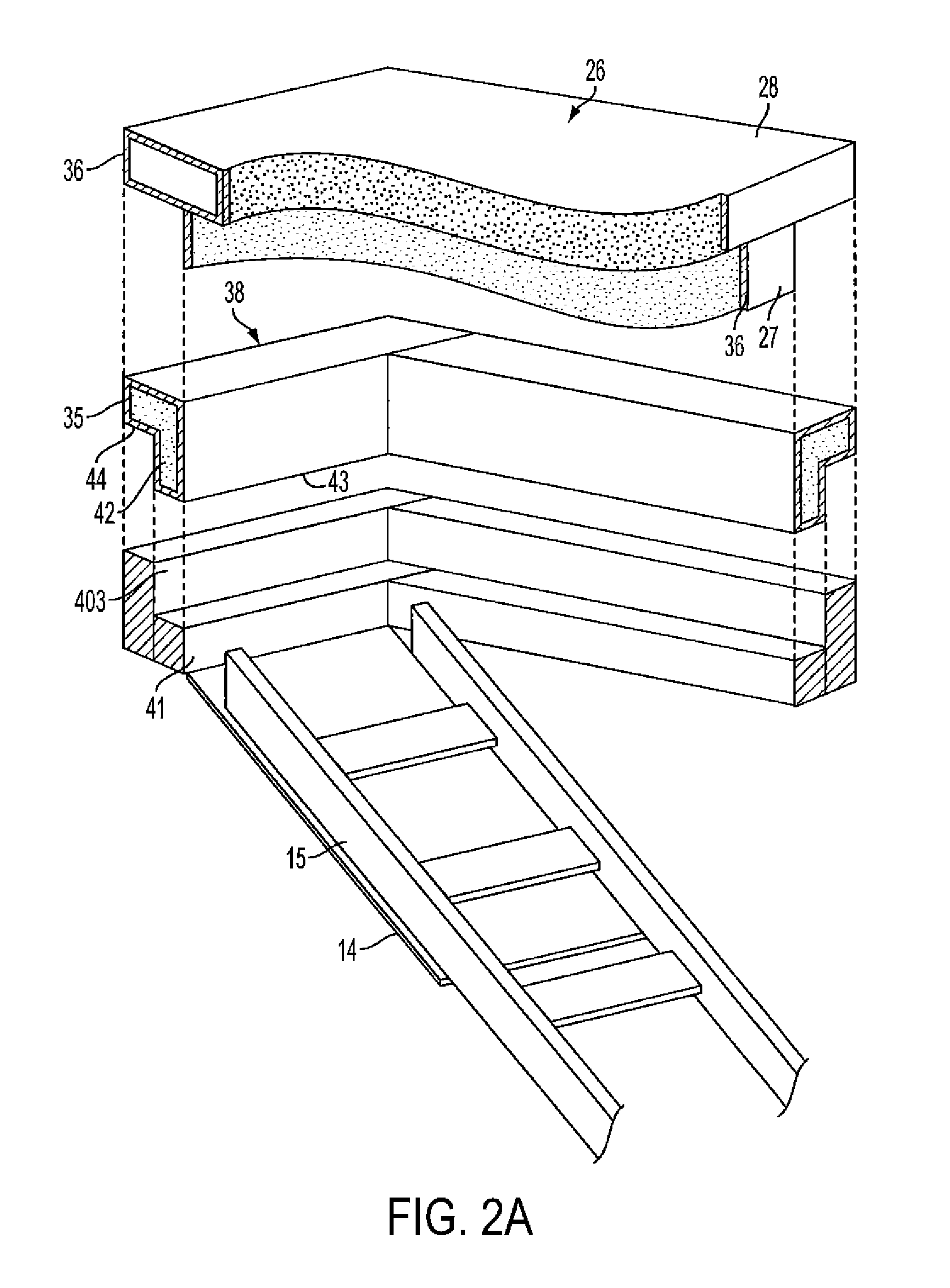Systems and Methods for Insulating Attic Openings
a technology of attic openings and systems, applied in the field of covers, can solve the problems of rarely being able to act as an air seal, door usually provides a substantial breach to the otherwise encompassing insulation of the home or other building, and achieves significant thermal efficiency, reduced noise transmission, and improved insulation. the effect of air flow
- Summary
- Abstract
- Description
- Claims
- Application Information
AI Technical Summary
Benefits of technology
Problems solved by technology
Method used
Image
Examples
Embodiment Construction
)
[0058]Although the present invention will be described hereinafter with particular reference to the accompanying drawings, it is to be understood at the outset that it is contemplated that the present invention may be varied in specific detail from that illustrated and described herein while still achieving the desirable characteristics and features of the present invention. Further, while specific frames, closures, and other components and features of the covers are depicted in specific embodiments for use with hatches, pull-down ladders, knee walls, or stairways, it should be understood that these components and features can be used across covers for use in the various different types of use. Accordingly, the description that follows is intended to be understood as a broad enabling disclosure directed to persons skilled in the applicable arts, and is not to be understood as being restrictive.
[0059]A first embodiment of a cover is disclosed in FIG. 1, which provides a cross-sectio...
PUM
 Login to View More
Login to View More Abstract
Description
Claims
Application Information
 Login to View More
Login to View More - R&D
- Intellectual Property
- Life Sciences
- Materials
- Tech Scout
- Unparalleled Data Quality
- Higher Quality Content
- 60% Fewer Hallucinations
Browse by: Latest US Patents, China's latest patents, Technical Efficacy Thesaurus, Application Domain, Technology Topic, Popular Technical Reports.
© 2025 PatSnap. All rights reserved.Legal|Privacy policy|Modern Slavery Act Transparency Statement|Sitemap|About US| Contact US: help@patsnap.com



